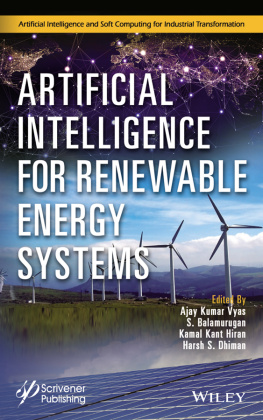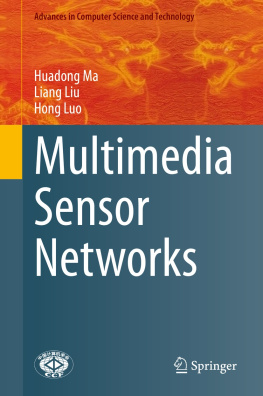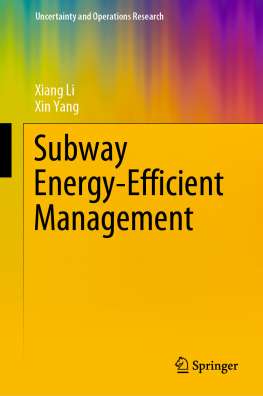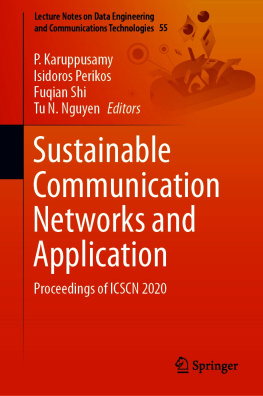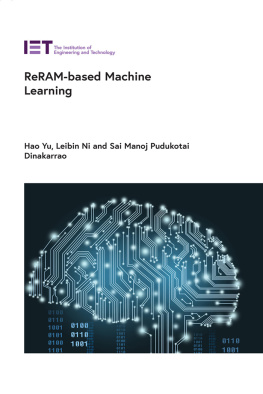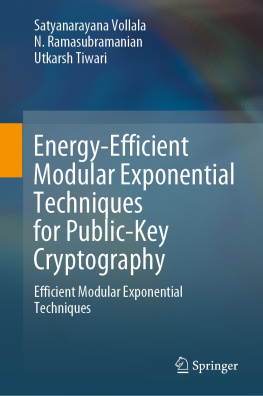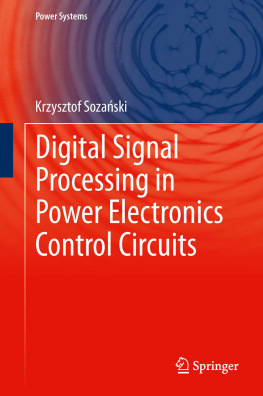Synthesis Lectures on Engineering, Science, and Technology
The focus of this series is general topics, and applications about, and for, engineers and scientists on a wide array of applications, methods and advances. Most titles cover subjects such as professional development, education, and study skills, as well as basic introductory undergraduate material and other topics appropriate for a broader and less technical audience.
Supriyo Bandyopadhyay
Magnetic Straintronics
An Energy-Efficient Hardware Paradigm for Digital and Analog Information Processing

The Springer logo.
Supriyo Bandyopadhyay
Department of Electrical and Computer Engineering, Virginia Commonwealth University, Richmond, VA, USA
ISSN 2690-0300 e-ISSN 2690-0327
Synthesis Lectures on Engineering, Science, and Technology
ISBN 978-3-031-20682-5 e-ISBN 978-3-031-20683-2
https://doi.org/10.1007/978-3-031-20683-2
The Editor(s) (if applicable) and The Author(s), under exclusive license to Springer Nature Switzerland AG 2022
This work is subject to copyright. All rights are solely and exclusively licensed by the Publisher, whether the whole or part of the material is concerned, specifically the rights of translation, reprinting, reuse of illustrations, recitation, broadcasting, reproduction on microfilms or in any other physical way, and transmission or information storage and retrieval, electronic adaptation, computer software, or by similar or dissimilar methodology now known or hereafter developed.
The use of general descriptive names, registered names, trademarks, service marks, etc. in this publication does not imply, even in the absence of a specific statement, that such names are exempt from the relevant protective laws and regulations and therefore free for general use.
The publisher, the authors, and the editors are safe to assume that the advice and information in this book are believed to be true and accurate at the date of publication. Neither the publisher nor the authors or the editors give a warranty, expressed or implied, with respect to the material contained herein or for any errors or omissions that may have been made. The publisher remains neutral with regard to jurisdictional claims in published maps and institutional affiliations.
This Springer imprint is published by the registered company Springer Nature Switzerland AG
The registered company address is: Gewerbestrasse 11, 6330 Cham, Switzerland
Dedicated to Bela Bandyopadhyay, Anuradha Bandyopadhyay and Saumil Bandyopadhyay
Preface
This monograph introduces the readers to some of the most important topical areas of magnetic straintronics that could lead to a potent hardware platform for processing digital and analog information at a minimal energy cost. Magnetic straintronics, hereafter referred to simply as straintronics for the sake of brevity, is the rapidly burgeoning field of science and engineering dealing with manipulating the magnetic states of magnetostrictive nanomagnets with electrically generated mechanical strain. These nanomagnets can implement a wide range of functional devices and circuits that are extremely energy-efficient and hence ideal for many applications, such as embedded processors, medically implanted devices, aggressively miniaturized stealth devices for defense and crime-fighting, and even mainframe computers.
The primitive unit of all digital hardware (computers, signal processors, communication devices, etc.) is a binary switch that has two states encoding the binary bits 0 and 1. Digital computing and signal processing are carried out by switching between the two states. The best switch is the one that can switch the fastest with minimal energy dissipation while boasting a low switching error rate for reliability. A straintronic switch, fashioned out of a magnetostrictive nanomagnet whose magnetization can assume only two stable orientations (representing bits 0 and 1), may be able to switch in less than 1 ns with energy dissipation as low as ~1 aJ when the magnetization is switched with electrically generated mechanical strain. The associated energy-delay product is one order of magnitude lower than what the best silicon field effect transistors today can offer. The low energy-delay product, of course, comes at a cost, and the cost is usually a high switching error rate. That high rate is a serious disadvantage for some applications, such as Boolean logic, but not so much for collective computational models (e.g. neuromorphic networks) where the collective activities of many devices working cooperatively elicit the computational or signal processing activity, and the failure of one or few devices to act properly does not impair the circuit operation. Straintronic devices have other attractive attributes as well, such as unusual characteristics that can be exploited to build better circuits, and, of course, non-volatility, which can be leveraged to implement superior architectures for specific digital and analog circuits. Non-volatility implies that the information in the switches (i.e. which of the two states it is in) is not lost once the device is powered off. Non-volatility can offer other advantages as well, such as resilience to hacking, energy saving (accruing from the fact that data do not have to be refreshed periodically), and no boot delay when powering up a computer.
This monograph mostly (but not exclusively) presents research carried out in the authors group and in the groups of his collaborators in the area of magnetic straintronics. The author acknowledges all his students who have worked in the field (too many to name individually) and his collaborators who (in alphabetical order) are Profs. Jayasimha Atulasimha, Anjan Barman, Avik W. Ghosh, Bin Ma, Csaba Andras Moritz, Erdem Topsakal, Amit Ranjan Trivedi and Jian-ping Wang.
Some of this monograph is excerpted from the following two review articles co-authored by this author:
S. Bandyopadhyay, J. Atulasimha and A. Barman, Magnetic straintronics: manipulating the magnetization of magnetostrictive nanomagnets with strain for energy-efficient applications. Appl. Phys. Rev. (4), 041323 (2021)
N. DSouza, et al., Energy-efficient switching of nanomagnets for computing: straintronics and other methodologies. Nanotechnology (44), 442001 (2018)
Comments on this work are welcome and can be emailed to the author at sbandy@vcu.edu.
Supriyo Bandyopadhyay
Richmond, VA, USA
Contents
The Author(s), under exclusive license to Springer Nature Switzerland AG 2022
S. Bandyopadhyay Magnetic Straintronics Synthesis Lectures on Engineering, Science, and Technology https://doi.org/10.1007/978-3-031-20683-2_1
1. Magnetic Straintronics
Supriyo Bandyopadhyay
(1)
Department of Electrical and Computer Engineering, Virginia Commonwealth University, Richmond, VA, USA
1.1 Introduction: Energy and Information
The two most important infrastructures in our society are energy and information because they define our civilizations level of technical advancement. The Kardashev scale [].



